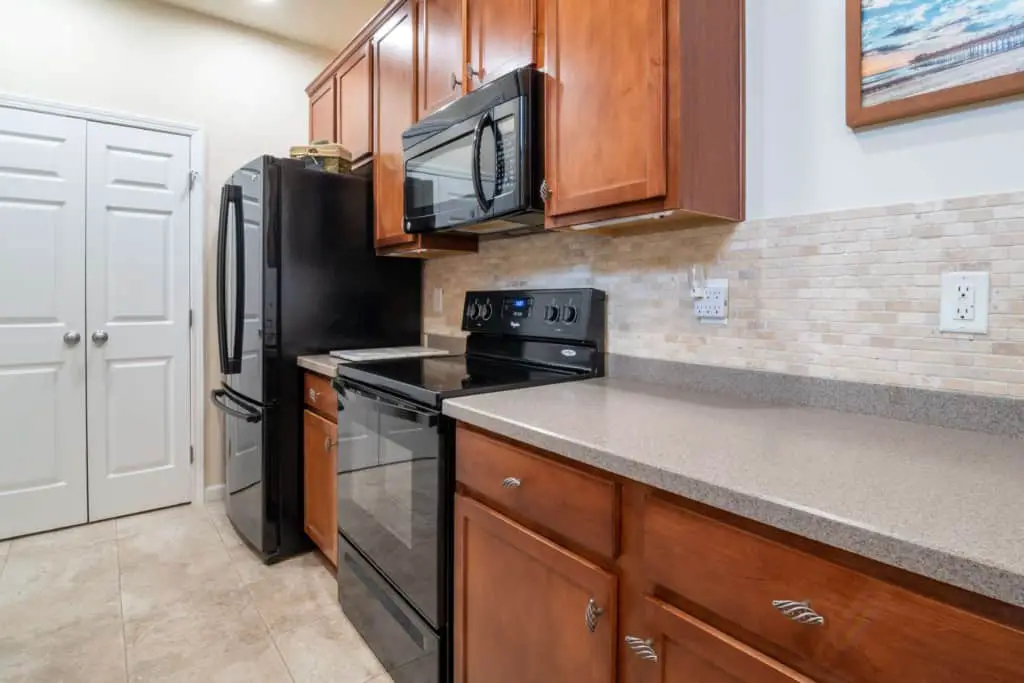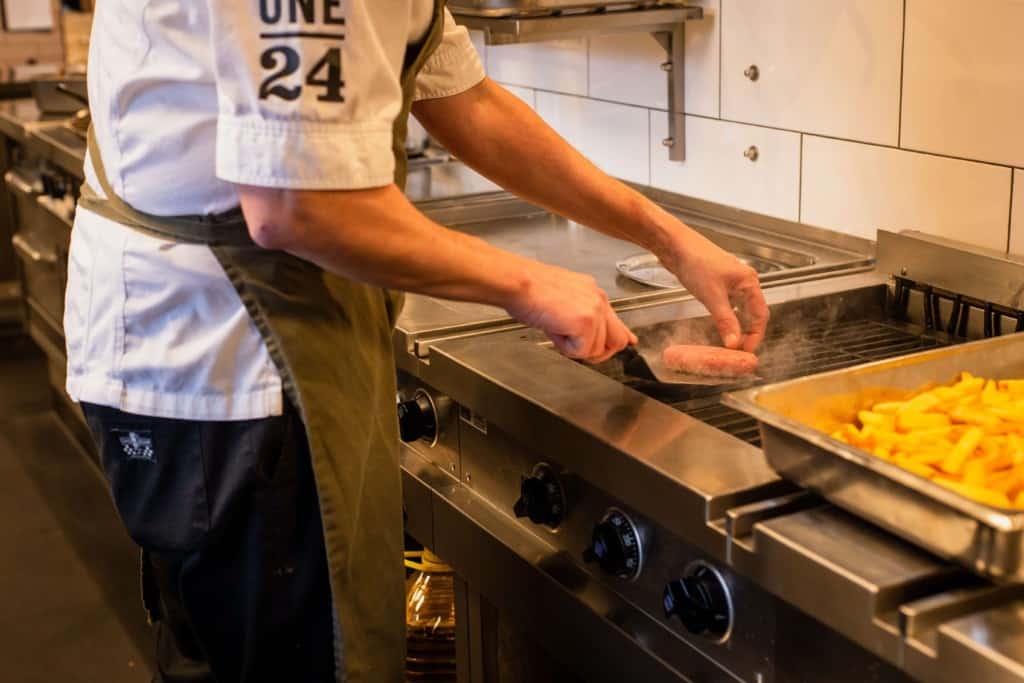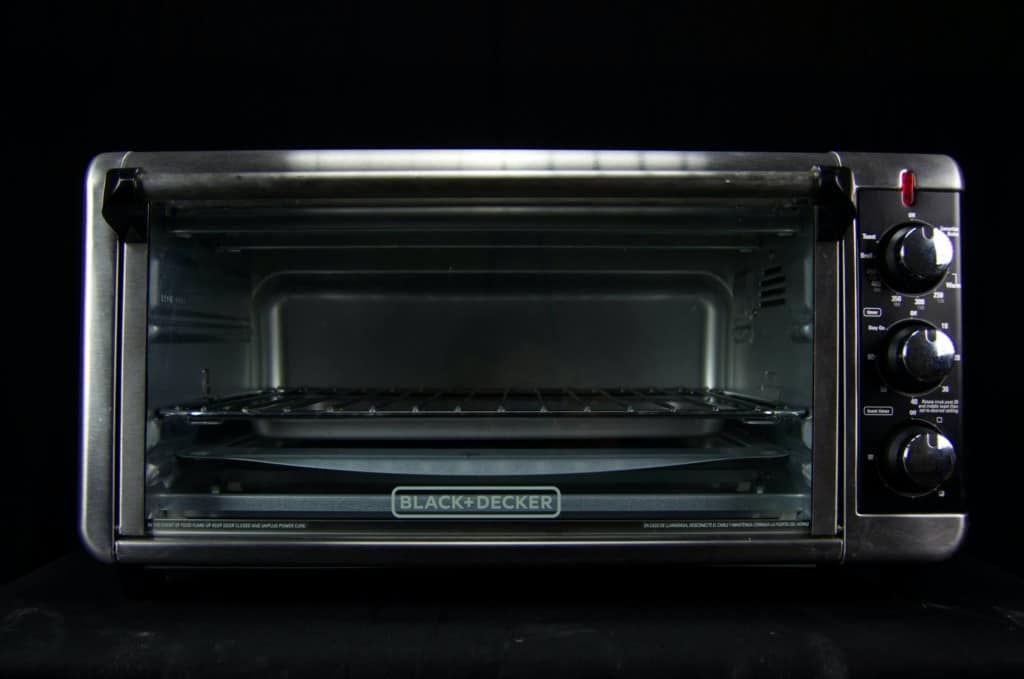Ovens are an essential appliance to anyone’s home. When picking the right one for you and your kitchen, don’t overlook the weight of the oven, which will be important for moving and installation. So, how much does an oven weigh?
A standard oven or stove range weighs 130-220 pounds on average. Wall-mounted ovens typically weigh 80-160 pounds. Big commercial ovens average up to 500 pounds. And small ovens, such as toaster ovens, weigh about 25 pounds.
As you can see, the type of oven you choose has a huge impact on the amount it will weigh. Check out the comparison table below to get an overview of the weights by oven type.
Disclaimer: This post contains affiliate links. This means I may earn a commission should you choose to make a purchase using my link
Table of Contents
How Much Does an Oven Weigh?
Look at the table below to compare the typical weights of different oven styles.
| Types of Ovens | Basic | Smart |
| Oven Range (Stovetop/Oven Combo) | 130 | 220 |
| Wall Oven | 80 | 120-160 |
| Double Wall Oven | 160 | 230 |
| Toaster Oven | 25 | 25 |
| Commercial Oven | 350 | 500 |
As you can see from the table, oven weights can REALLY vary. The extra features that come with ovens add extra weight but can also make your cooking experience more convenient.
Now let’s dig deeper into these oven types and look at a few specific examples to get a clearer picture.
Different Types of Ovens
1. Oven Ranges

Oven ranges are the typical stovetop/oven combinations that you find in many homes. An oven range can be either gas, or electric, and they typically weigh 130-220 pounds.
Here’s a good example of a popular gas oven range at Home Depot. It weighs 194 pounds.
And here’s a good example of a popular electric oven range at Home Depot. It weighs 158 pounds.
The most basic oven range will usually be about 130 pounds. Keep in mind this oven does not have any smart technology. We’re talking about the most bare-bones model you can buy.
But, as you increase the size and number of features in your oven, the weight will also go up. On the high-end, oven ranges weigh around 220 pounds.
If you’re considering an oven that’s NOT an oven range, then it’s probably a wall oven.
2. Wall Ovens

Wall ovens are ovens that can be installed into your wall at any height you like in your kitchen. They do not take up any walking space in your kitchen and they only weigh about 80 pounds on average.
This type of oven comes in a few different styles.
- Economy. The economy wall oven is basic, with only the most necessary features for an oven. A great example of this is the Empava 24 inch Single Electric Wall Oven. It weighs 79 pounds.
- Smart. The smart wall oven comes with smart features and weighs 120-160 pounds on average. This is due to most all smart ovens having convection ovens. A great example is the LG Electronic’s 30 inch Single Electric Wall Oven. It weighs 161 pounds.
- Double. Double wall ovens are just 2 ovens that are together as one oven. They average about 230 pounds. A great example of this is GE’s 30 inch Smart Double Electric Wall Oven; it weighs 234 pounds.
For business owners, or for very serious kitchen enthusiasts, there are also commercial ovens. Which, as you may guess, are super heavy!
3. Commercial Ovens

Commercial ovens are made to make a ton of food, so they are noticeably larger. This is the type of oven that you would usually find at a restaurant.
The size of the commercial oven varies depending on how much food a restaurant would put out on a normal day.
These ovens are designed to be able to handle cooking a large amount of food every single day. You even have the option of having a double oven in your commercial oven.
You will need a lot of help moving this type of oven because it can weigh up to 500 pounds on average!
Commercial-style ovens can be found here on Best Buy’s website.
4. Toaster Ovens

Finally, toaster ovens are the smallest of the bunch, and weigh about 25 pounds on average.
If you’re not familiar with toaster ovens, they are small (microwave-sized) ovens. But don’t judge them by their small size, toaster ovens can perform a LOT of different functions in the kitchen.
It is really like a couple of your kitchen appliances all rolled into one. You can bake, toast, and warm up food in this small appliance.
You can even purchase a toaster oven that has a combination of other appliances with it. For example, you could buy a toaster oven/air fryer combination, like this one on Amazon, or a toaster oven/pizza oven combination.
Now that you have more info on oven weights, you may be wondering how to move the oven to your desired location. As nerve-wracking as it may sound, moving around an expensive and heavy piece of equipment can be easier than you think. Here are a few tips to help you get through it.
How to Move an Oven
Taking Measurements
No matter how you decide to move your oven, the first thing you’ll likely need to do is to make sure you’ve taken the necessary measurements.
You will want to know how big your doorways are, how big your oven is, and how big the designated spot for your oven is.
This is extremely important information you need to know, because if you cannot even get the oven through the door, then that will be a huge problem.
Delivery and Installation Options
Now, this is important to consider. Most stores give you the option of paying an extra fee for delivering the appliance to your house and even installing it.
It may seem like an unnecessary extra expense, but this option can reduce your stress and the risk of you straining/injuring yourself.
Fees will typically vary depending on how far away you live from the store you bought it from, and how expensive the equipment is. After the fee is paid, the only thing you have to do is hold the door!
Use an Appliance Dolly
If you decide to go ahead and move the oven yourself, then it will be immensely helpful to have an appliance dolly.
These dollies are specifically designed for moving heavy appliances, and they even come with straps to ensure that your appliance stays on the dolly while it is being moved. They also come with rubber on the resting rails, in order to protect your expensive appliances from scratches and dings.
Here’s a really helpful video demonstrating how to properly use an appliance dolly to lift an oven:
You can also read a full tutorial on how to safely move your appliances with an appliance dolly.
Ask for A Helping Hand
Another important thing to do if you decide to move the oven yourself is to ask for help!
Doing it totally by yourself could cause extra and unnecessary stress/risk. So, do yourself a favor, and find a strong friend or neighbor to lend a hand.
I hope you’ve found this article helpful. If you want more tips on home improvement and kitchen projects, check out the rest of our blog!
And if you happen to be really into learning the weights of things, then we’ve also done an in-depth summary of the weight of toilets.
